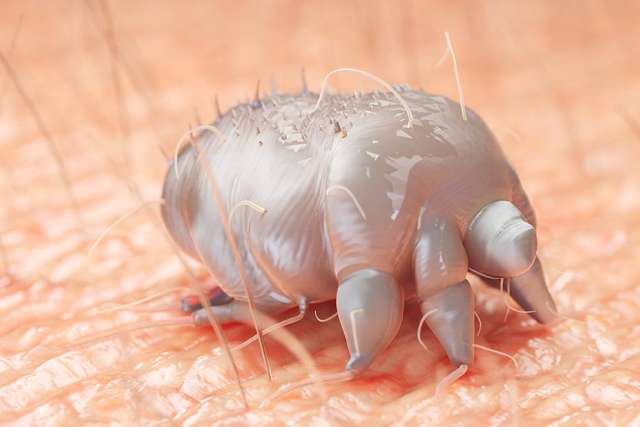Dear Doctor: My wife and I had to go back to our offices, so our 4-year-old son is back in day care. About six weeks in, he got an itchy rash that drove him nuts. His pediatrician says it's scabies. What is that? She says it’s likely he got it at day care, and we’re worried it will happen again.
Dear Reader: The word “scabies” comes from the name of a microscopic mite known as Sarcoptes scabiei var. hominis -- the human itch mite.
Scabies are minute insectlike organisms -- about the size of the point of a pin -- that are related to ticks. They’re extremely contagious and are passed along through direct and prolonged human contact. You won’t get scabies from a quick hug or a handshake. However, in situations such as a day care, where children spend a lot of time together in close quarters, are physical in their play, and often share communal toys, pillows and blankets, an infestation can spread quickly.
Impregnated female mites burrow under the topmost layers of skin, where they create tunnels and lay two to three eggs per day. Once hatched, the mite larvae return to the skin’s surface. There, they construct what are known as molting pouches, where they mature. The new adults will then either migrate to other parts of the body, or to another person’s skin.
The itch associated with scabies arises from the body's allergic reaction to the mites, their eggs and their waste. In someone who has never had scabies, it can take four to eight weeks for an allergic reaction to develop. Once it begins, it’s an often-maddening itch that becomes especially persistent at night.
In addition to itching, symptoms of scabies include the rash such as the one your son experienced. It may resemble hives; clusters of tiny bumps, knots or pimples; or patches of scaly skin. In children, the mites are most commonly found on the face, neck and scalp, and they can also be present in the palms of the hands, webs of the fingers and the soles of the feet. Diagnosis is based on the distinctive appearance and distribution of the rash, and on the presence of burrows.

Scratching can lead to open sores, which are susceptible to a secondary infection. Treatment with prescription medications known as scabicides is effective. Over-the-counter products have neither been tested nor approved for scabies treatment. Antihistamines, anti-itching lotions and steroid creams might be prescribed to allay the itch.
Because scabies is so contagious, it’s important for any affected person to alert those around them. It is recommended that entire families or contact groups, such as the children, staff and parents involved in your day care, undergo treatment at the same time.
Bedding, clothing and other textiles should be treated as well. Without a host, scabies can’t survive beyond 72 hours, so contaminated items should be fully sealed in plastic bags for at least that long. Also effective are washing them in very hot water and drying them in a very hot dryer. Although it’s possible that the issue may reoccur, a thorough and vigilant response should eradicate the problem.
(Send your questions to [email protected], or write: Ask the Doctors, c/o UCLA Health Sciences Media Relations, 10960 Wilshire Blvd., Suite 1955, Los Angeles, CA 90025. Owing to the volume of mail, personal replies cannot be provided.)





